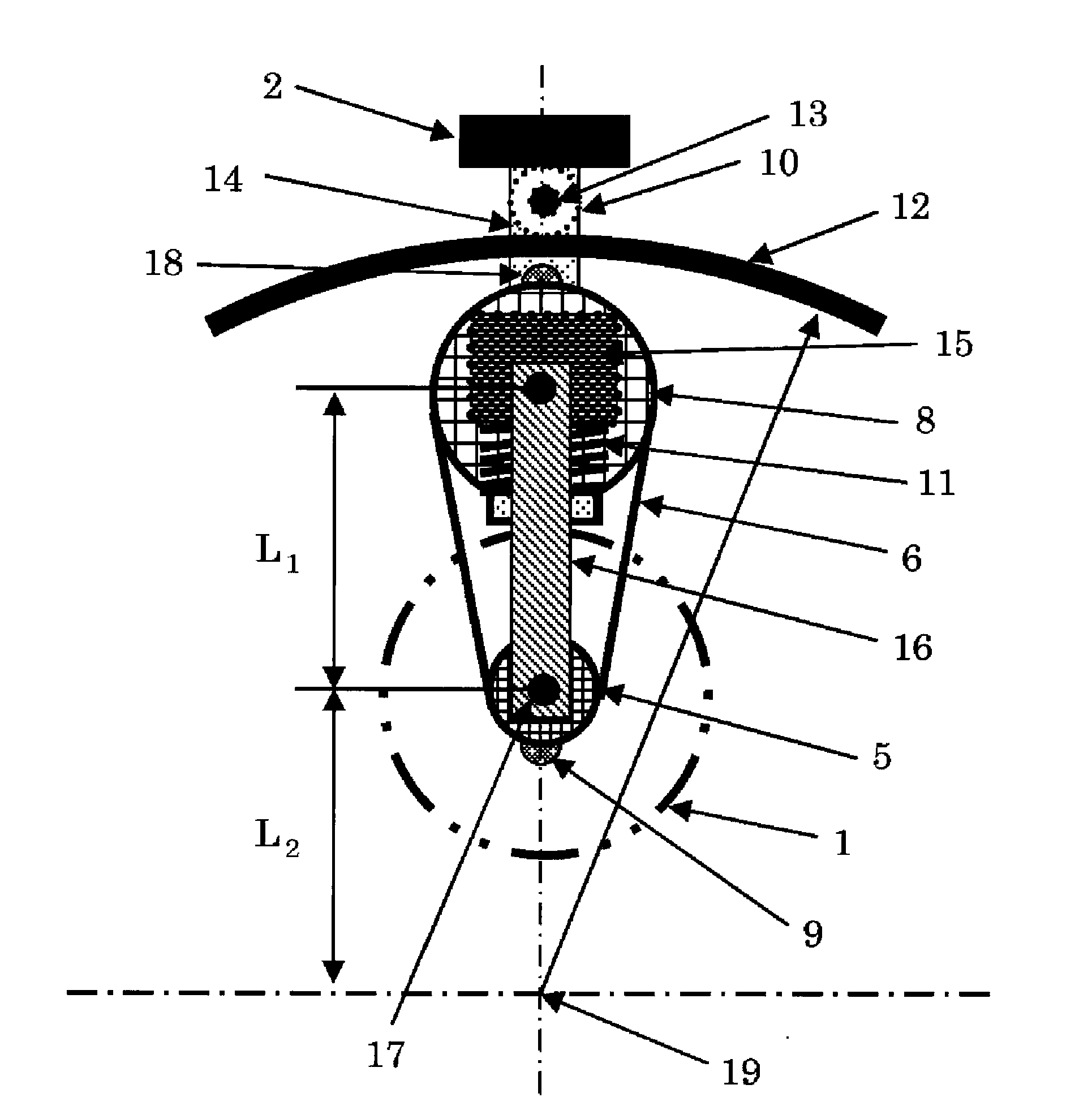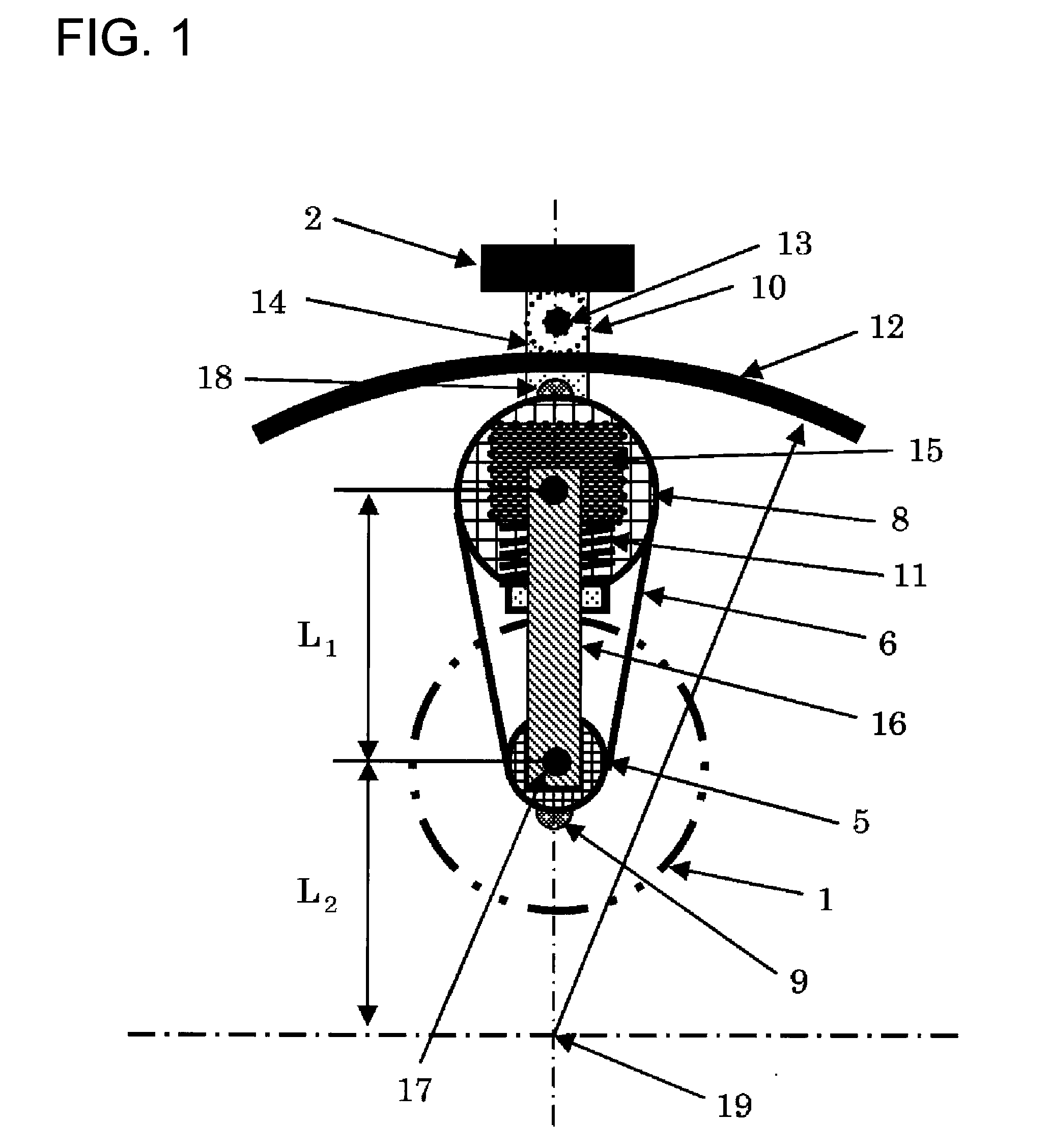Ultrasonic probe
a technology of ultrasonic probes and probes, applied in the field of ultrasonic probes, can solve the problems of difficult reduction of the ultrasonic transmission/reception area near the surface of an organism, the inability to employ a three-dimensional ultrasonic probe for diagnosing an additional area, and the inability to diagnose an additional area, such as the carotid artery or the thyroid, to be easily performed
- Summary
- Abstract
- Description
- Claims
- Application Information
AI Technical Summary
Benefits of technology
Problems solved by technology
Method used
Image
Examples
Embodiment Construction
First Mode
[0181]Ultrasonic probes according to the modes of the present invention will now be described while referring to drawings. FIGS. 1 and 2 are a front view and a side view of an ultrasonic probe according to a first mode of the present invention. In FIG. 2, a motor spindle 17 of a motor 1 is to be rotated or oscillated upon externally receiving an electric drive signal from ultrasonic diagnostic equipment (not shown). An ultrasonic element 2 is stored in an area that is enclosed by a window 3 and a probe casing 7, and this area is filled with an acoustic coupling liquid 4 for transferring an ultrasonic signal that is transmitted or received by the ultrasonic element 2.
[0182]The motor spindle 17 of the motor 1, which is secured to the outside of the probe casing 7, passes via a sealant, such as material used as an oil seal (not shown), through the probe casing 7 and a first cylinder pulley 5 that is secured to the probe casing 7 and to an arm 16 arranged within the probe casi...
PUM
 Login to View More
Login to View More Abstract
Description
Claims
Application Information
 Login to View More
Login to View More - R&D
- Intellectual Property
- Life Sciences
- Materials
- Tech Scout
- Unparalleled Data Quality
- Higher Quality Content
- 60% Fewer Hallucinations
Browse by: Latest US Patents, China's latest patents, Technical Efficacy Thesaurus, Application Domain, Technology Topic, Popular Technical Reports.
© 2025 PatSnap. All rights reserved.Legal|Privacy policy|Modern Slavery Act Transparency Statement|Sitemap|About US| Contact US: help@patsnap.com



